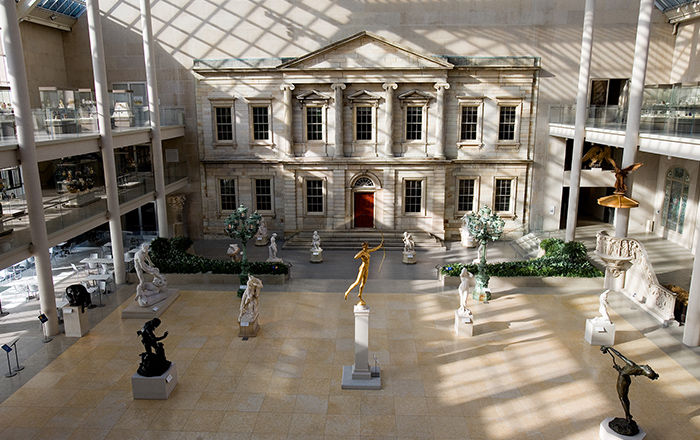Returned to lender The Met accepts temporary loans of art both for short-term exhibitions and for long-term display in its galleries.
Man’s Headdress from a Chief’s Costume
Malecite tribe, New Brunswick, Canada, mid- to late 18th century
Not on view
Textiles represented the principal commodity that Europeans traded to native North Americans for expensive fur pelts and gave as gifts to curry favor with tribal leaders. This headdress is one part of an ensemble for a chief of the Malecite tribe, located around the St. John River valley in eastern Canada. The red-dyed wool may have been produced in Gloucester, England, a region famous for such cloth. Other European-made components, including the yellow silk ribbon, metallic gold thread, and glass beads, further demonstrate the involvement of native tribes in global trade. The heated competition for furs between France and England often allowed Native Americans to dictate the terms of exchange, forcing the Europeans to lower cloth prices, alter designs, and even supply their rivals’ goods to satisfy Indian demands.
This image cannot be enlarged, viewed at full screen, or downloaded.
This artwork is meant to be viewed from right to left. Scroll left to view more.
.JPG)

.JPG)
